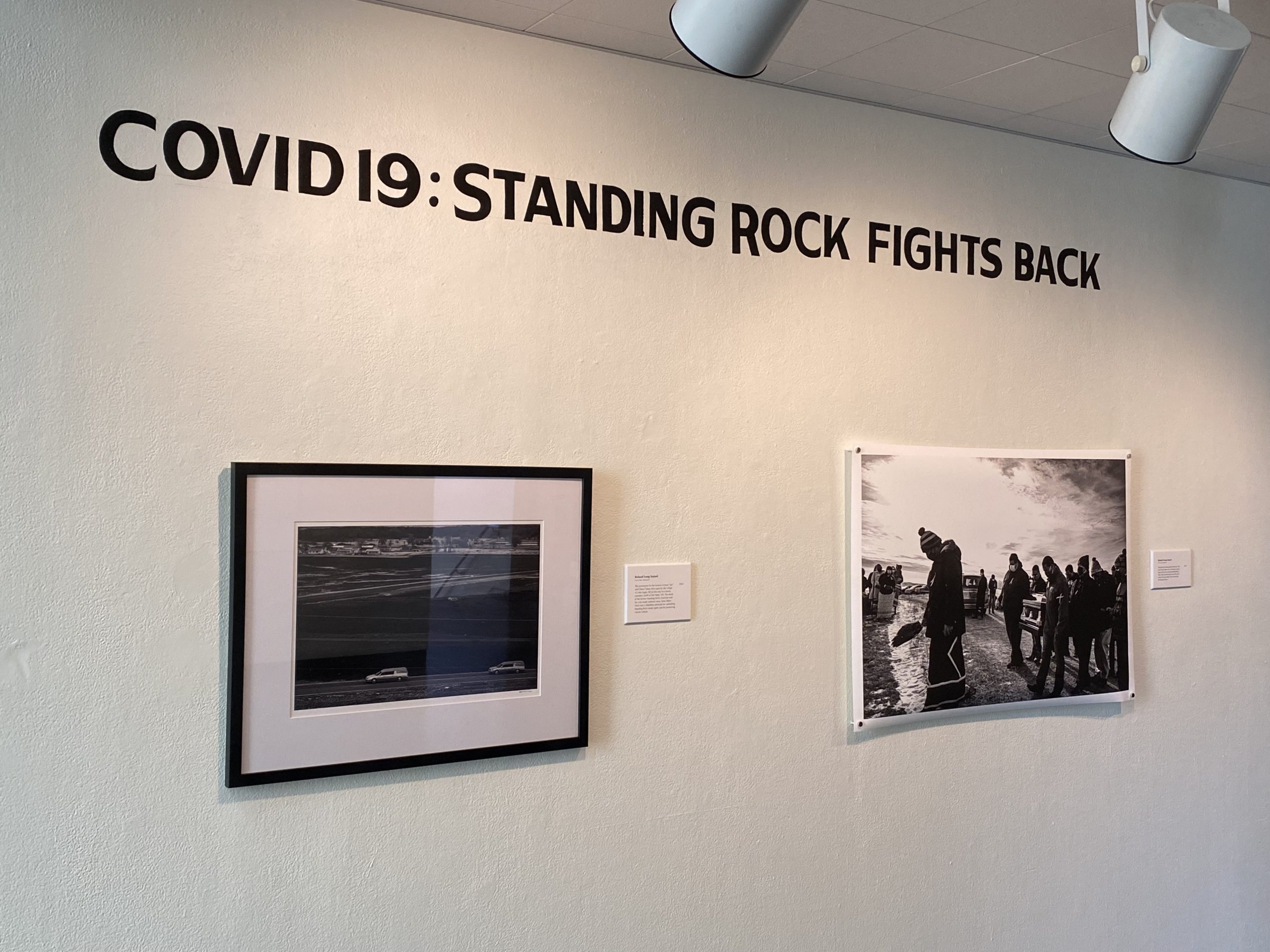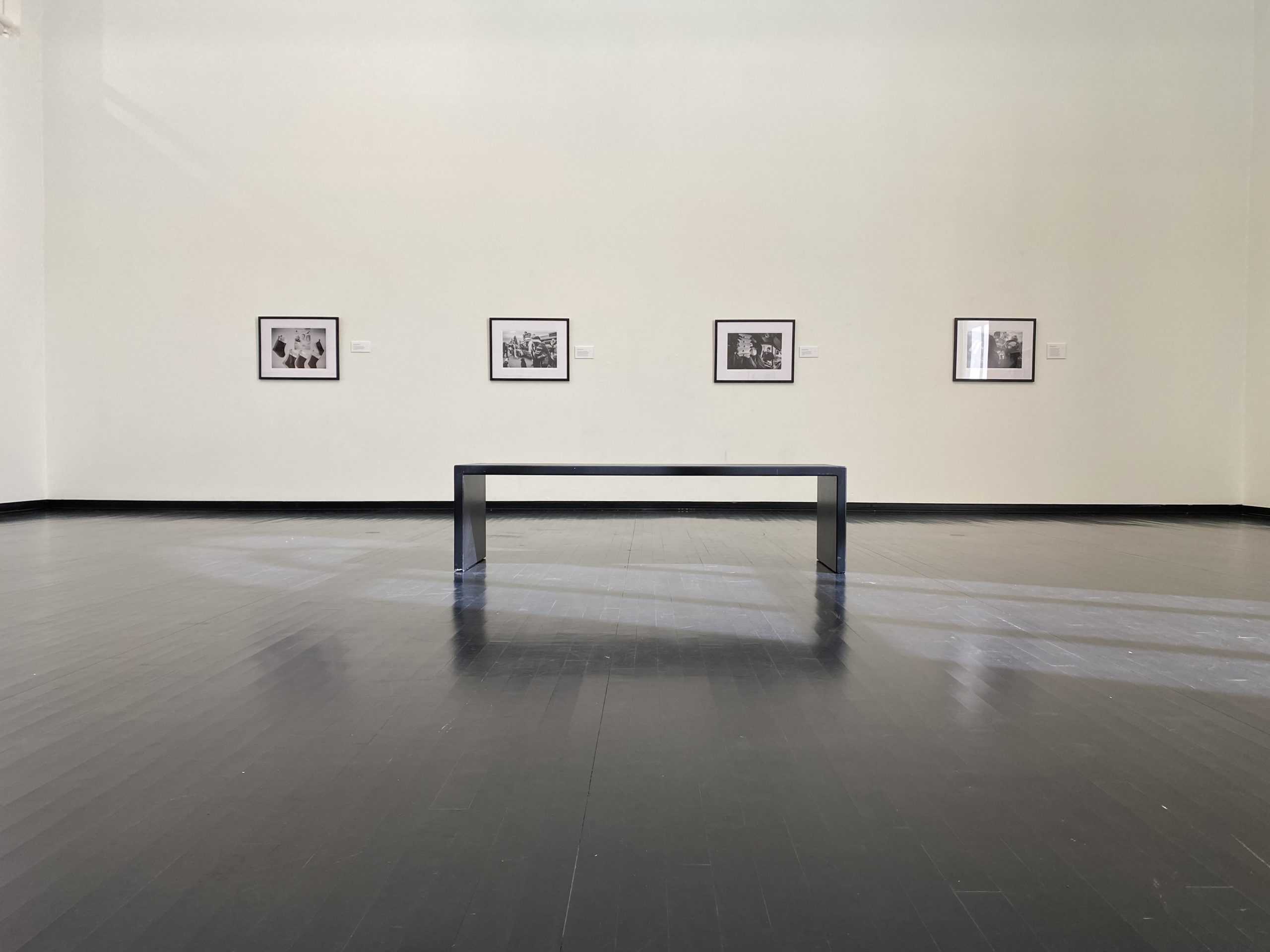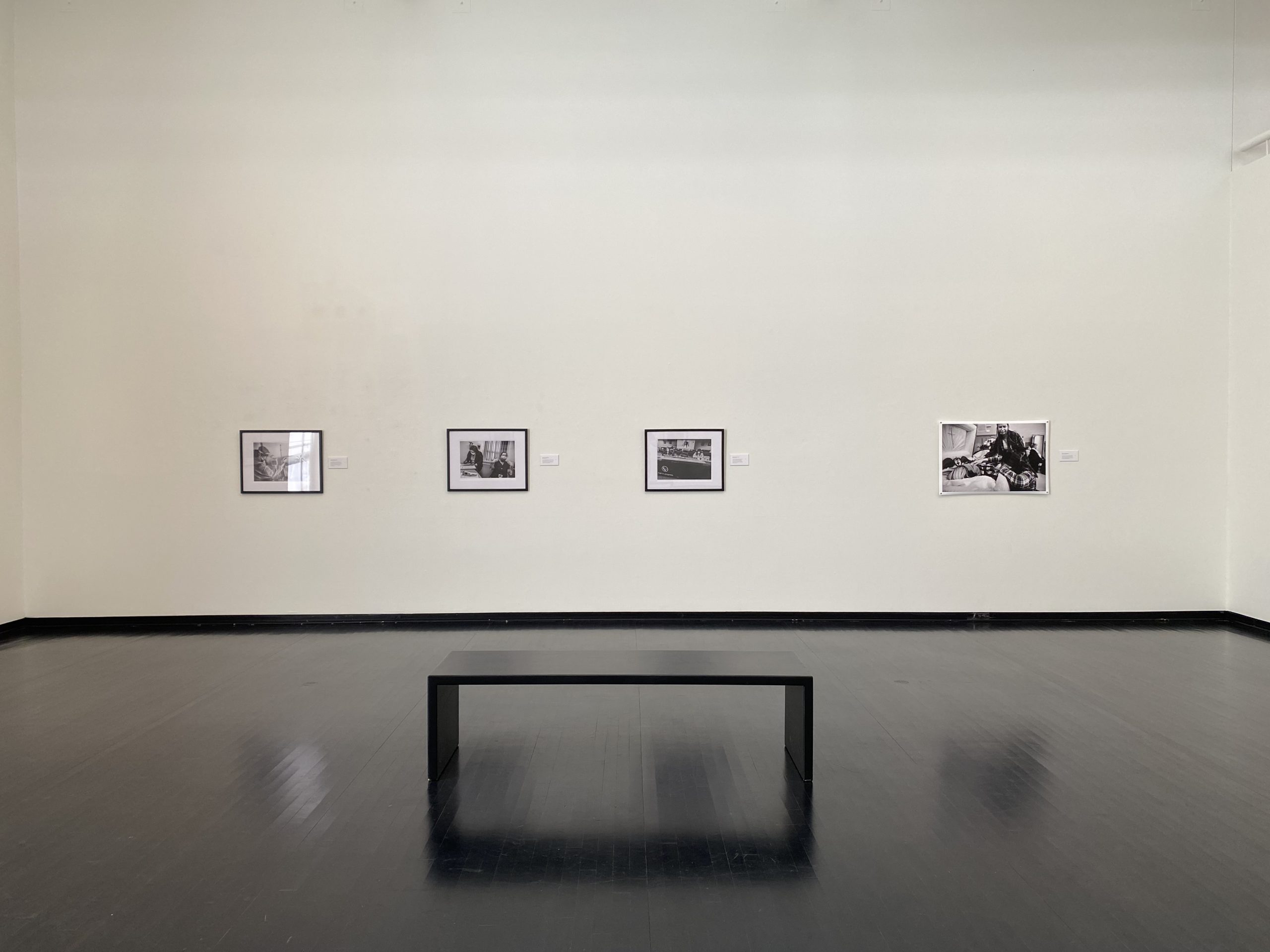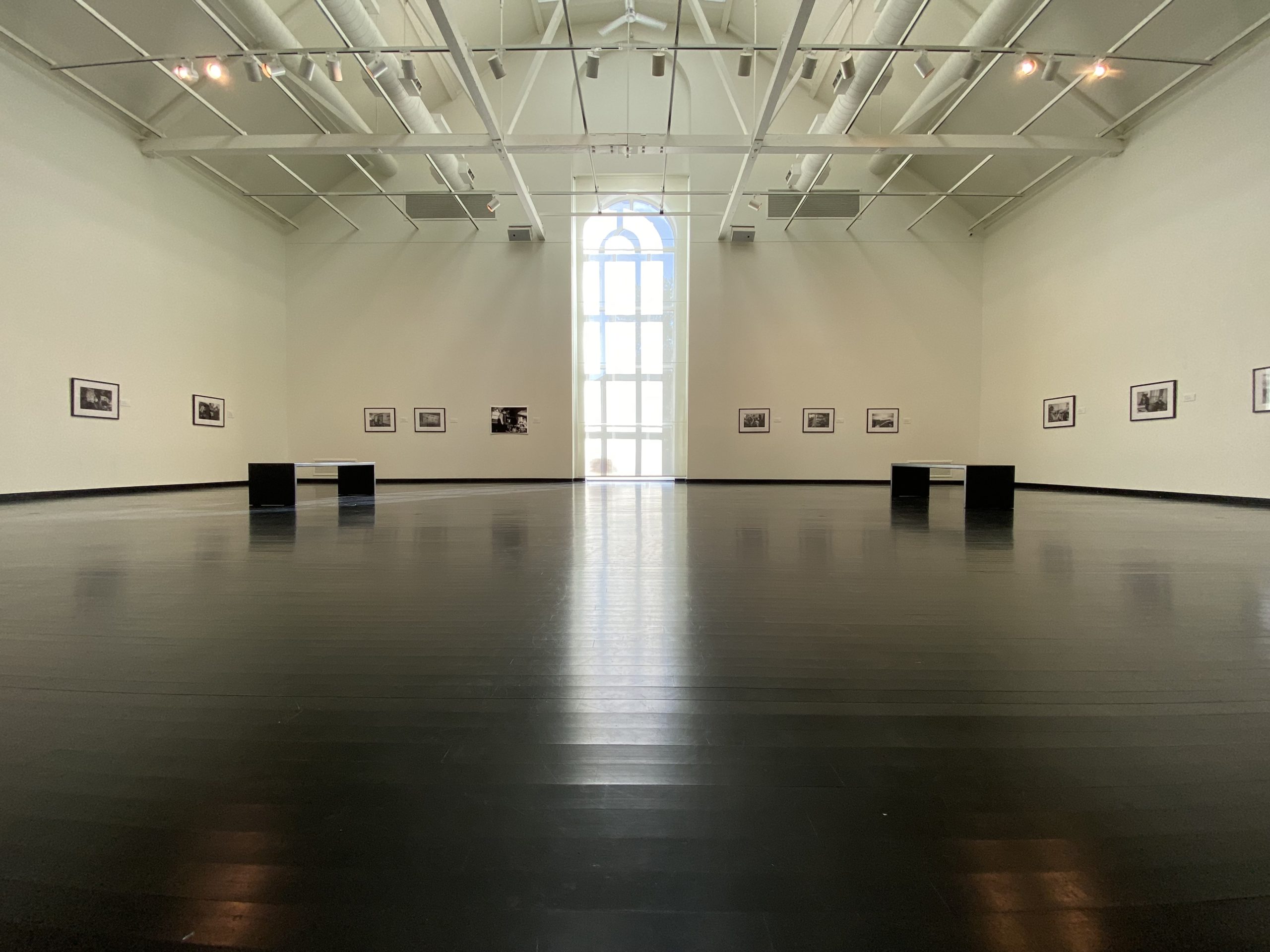September 1 – November 27, 2022
Opening Reception is Thursday, September 1, from 5:00 – 7:00 pm
Drinks and hors d’oeuvres served.
Richard Tsong-Taatarii is a Staff Photographer for the Minneapolis Star Tribune and and a documentary photographer of his own Picture Poems. In 2018, Tsong-Taatarii was awarded 2nd place in the World Press Photo contest for his photograph Not My Verdict. In 2019, Tsong-Taatarii was part of the Museum’s group exhibition “Power/Empower,” with his black and white photographs of Pine Ridge and Standing Rock. That exhibition was funded by the Windrose Fund. COVID: Standing Rock Fights Back, documents the devastation Covid-19 had on Standing Rock, the work of public health officials, how people adapted, and what they did to stay healthy over this extended period. The exhibition will be entered into the Museum’s Permanent Collection upon closing.
Behind the Bylines
From reporting on the Black Lives Matter movement in the U.S. to Rohingya refugees in Bangladesh, photojournalist Richard Tsong-Taatarii has captured a multitude of moments, each photograph made with the goal of impact.
“You want to make images with heart, where people feel or they can sort of get a hint of what a person’s going through in the image, and that’s what you want to do,” said Tsong-Taatarii. “It’s to have that impact.”
“Everyone’s a photographer. Everyone’s a writer, but if you want to be a good photographer or writer, you want to create something that has impact, that makes you feel something.”
Of Chinese and Malaysian descent, Tsong-Taatarii immigrated to the U.S. with his family when he was 10 years old, something he feels has helped with his work.
“As an immigrant, I feel like even though I came at an early age, you’ll always be an outsider in some ways, even if you don’t have an accent or people think you’re born here,” said Tsong-Taatarii. “This is helpful as a photographer in some ways because you can identify with the ‘Other.”
According to Tsong-Taatarii, he did not seriously consider photography until several years after college. Prior to photography, Tsong-Taatarii tried subjects such as business, South Asian studies and architecture.
Tsong-Taatarii was drawn to photography after a backpacking trip in Europe that allowed him to explore art.
“One of the things that probably inspired me was, it would seem like I would go to a museum once a day, and I just enjoyed looking at artwork and paintings, and it kind of inspired me in terms of composition and things like that,” said Tsong-Taatarii.
In tandem with art, Tsong-Taatarii views photography as a form of poetry, which is reflected in his website titled, “A Picture Poet.”
“I just like how a single image can sum up a lot of feelings and it can crystallize a lot of things, a single image,” said Tsong-Taatarii. “I just thought photography can be poetic, so I’ve had (the name) for a long time.”
“I wasn’t thinking that I’m the picture poet. I’m just one amongst many.”
After studying photojournalism in graduate school at Ohio University, Tsong-Taatarii started working for the Minneapolis Star Tribune newspaper, where he has been for the past 18 years. Tsong-Taatarii’s work focuses primarily on general news and protests, including the Black Lives Matter movement and life at the Pine Ridge Reservation.
“My goal is always to make an image that is relatable in terms of the heart of the issue, like how is it impacting an individual?” said Tsong-Taatarii. “There will be some people in the protest who are super passionate about the issue and they will cry, they will scream, and so I really go and try to capture that and the scale of it also, I try to do that. I try to get really close to the most intense person.”
“One of my skills is I don’t mind getting into someone’s space. I don’t want to offend them. I try to talk to them also because I’m trying to create an intimate image in a very public space.”
The “Lakota Resistance: the Bison, the Horse, and the River” is Tsong-Taatarii’s personal project. It is a documentary that includes coverage of the protests on Standing Rock and the Pine Ridge Reservation.
“The shoot was five years and it’s still ongoing,” said Tsong-Taatarii. “It’s probably going to be a lifetime project.”
Rich Tsong-Taatarii’s photography from Standing Rock is a potent reminder that, although the Lakota Standoff is not in the headlines much anymore, the people he photographed and the sacred natural resources they are trying to protect have not gone away.
Hege Library Art Gallery Director and Curator Terry Hammond in an email interview with The Guilfordian.
Installation Images
A hand made sign outside of Bullhead, SD reminds tribal members to
mask up and use gloves when possible.
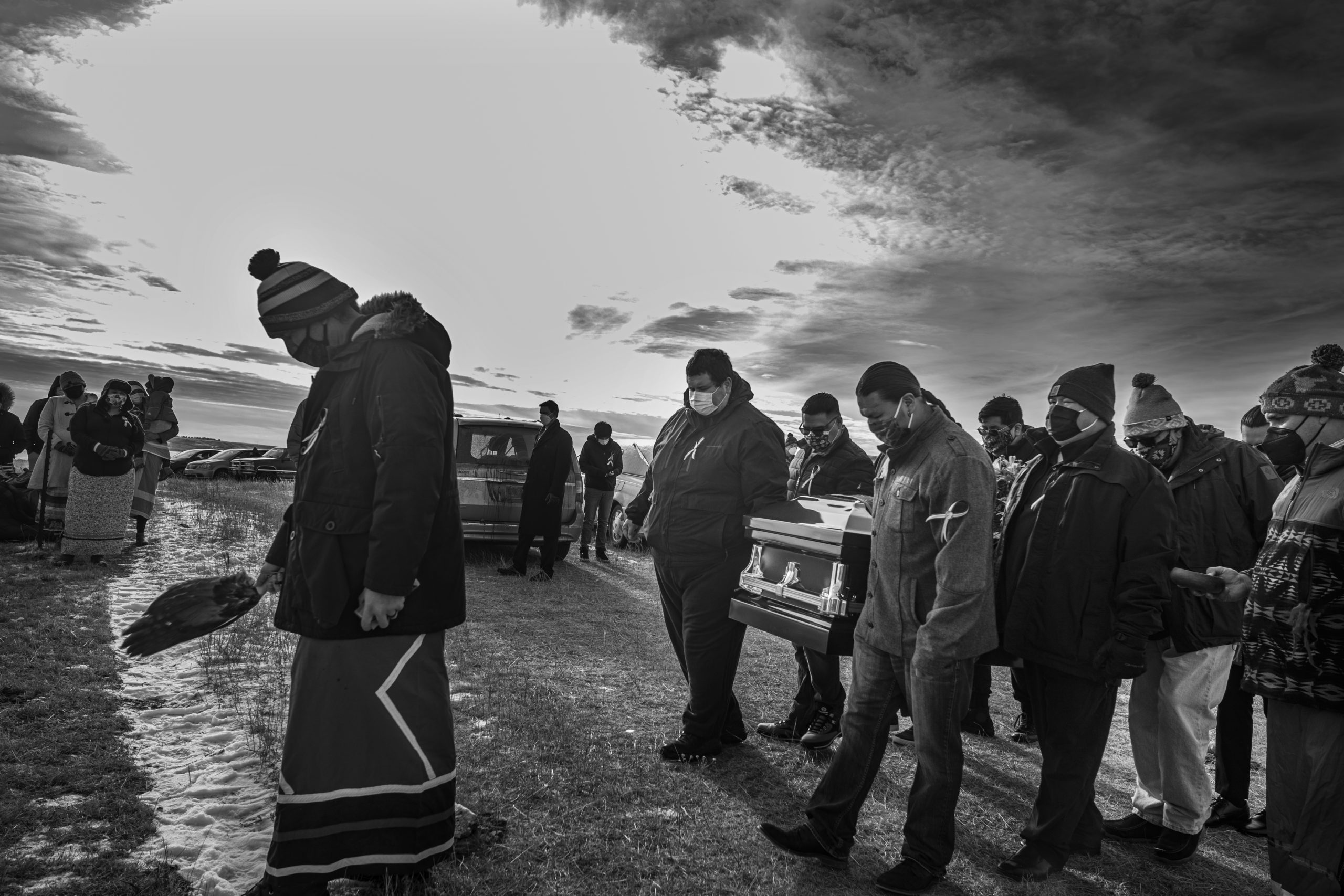
The death of husband and wife Jesse “Jay” and Cheryl Taken Alive delivered a major blow to the clan and the Standing Rock Tribe. They were buried on a family plot south of Cannon Ball, N.D., overlooking the Missouri River.
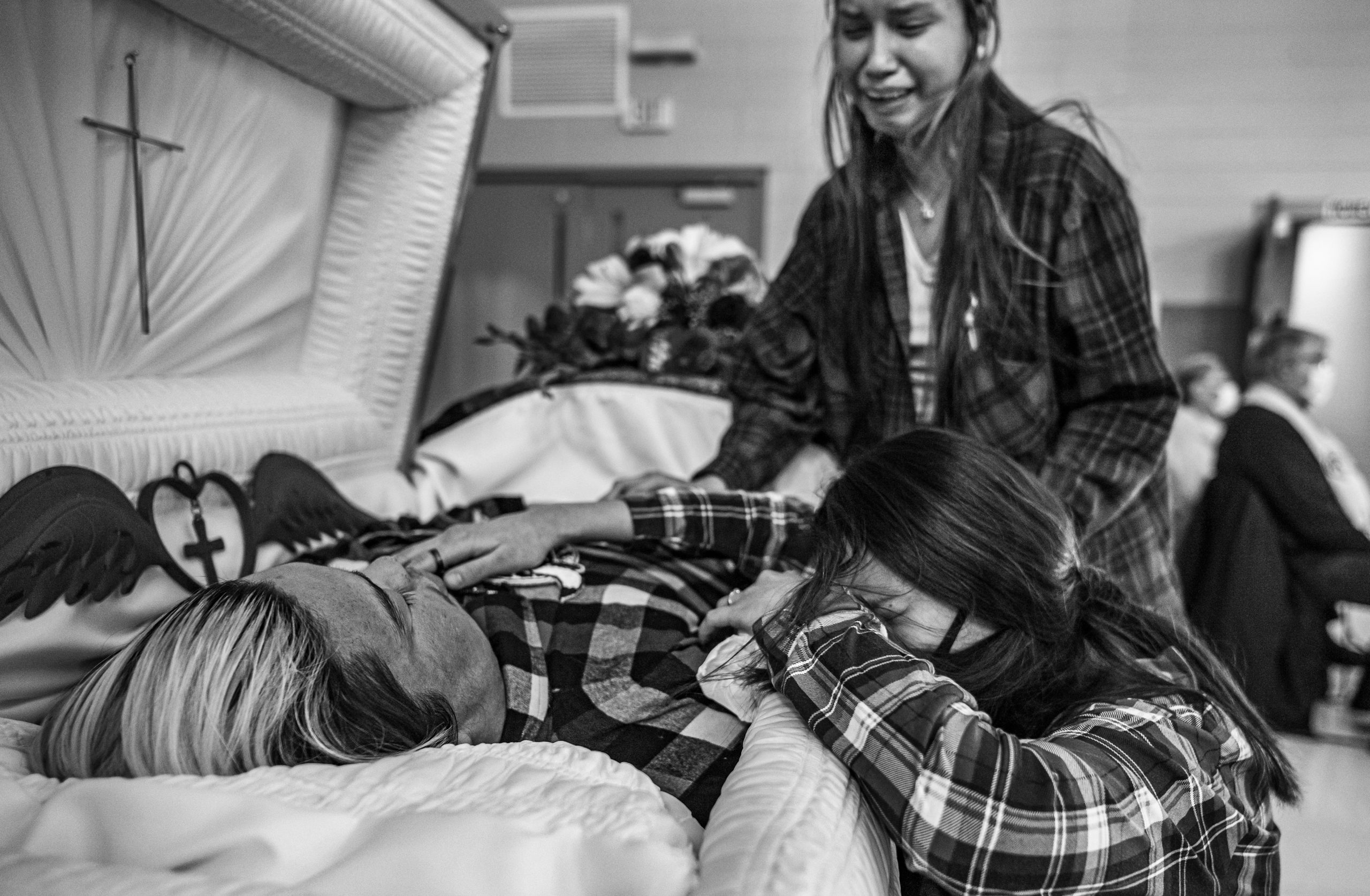
Sisters Antania and Anaya Mellette, left and right, grieve for their uncle Jared Mellette. The two sisters were especially close to Jared who died in a Minneapolis hospital at the age of 24 of COVID-19 complications. Photographs made with the consent of the family.

Shannon Brown helps deliver evening meals for the Boys and Girls Club in Standing Rock Reservation in McLaughlin, S.D. The meals are essential in helping minimize food
insecurity in the villages on the reservation.
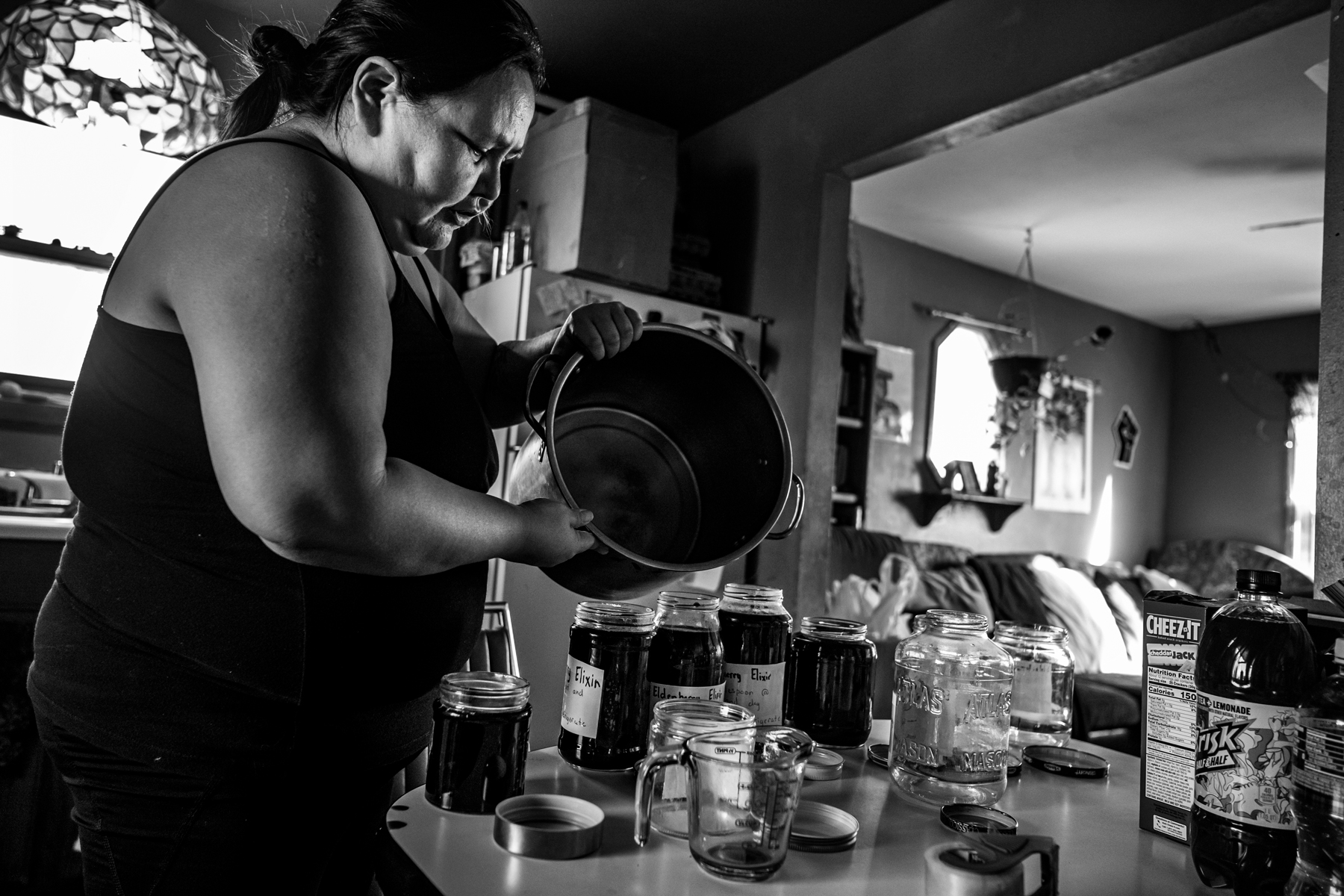
Waniya Locke, a Lakota language teacher and activist, makes an elderberry syrup, which she delivers free of charge to tribal members suffering or trying to prevent the onset of COVID-19 symptoms. Locke fundraises through the internet for the ingredients to make the homeopathic remedy.
Individual Sponsors
$500 and above
Martin Brown
$100 and above
Lynne Allen
